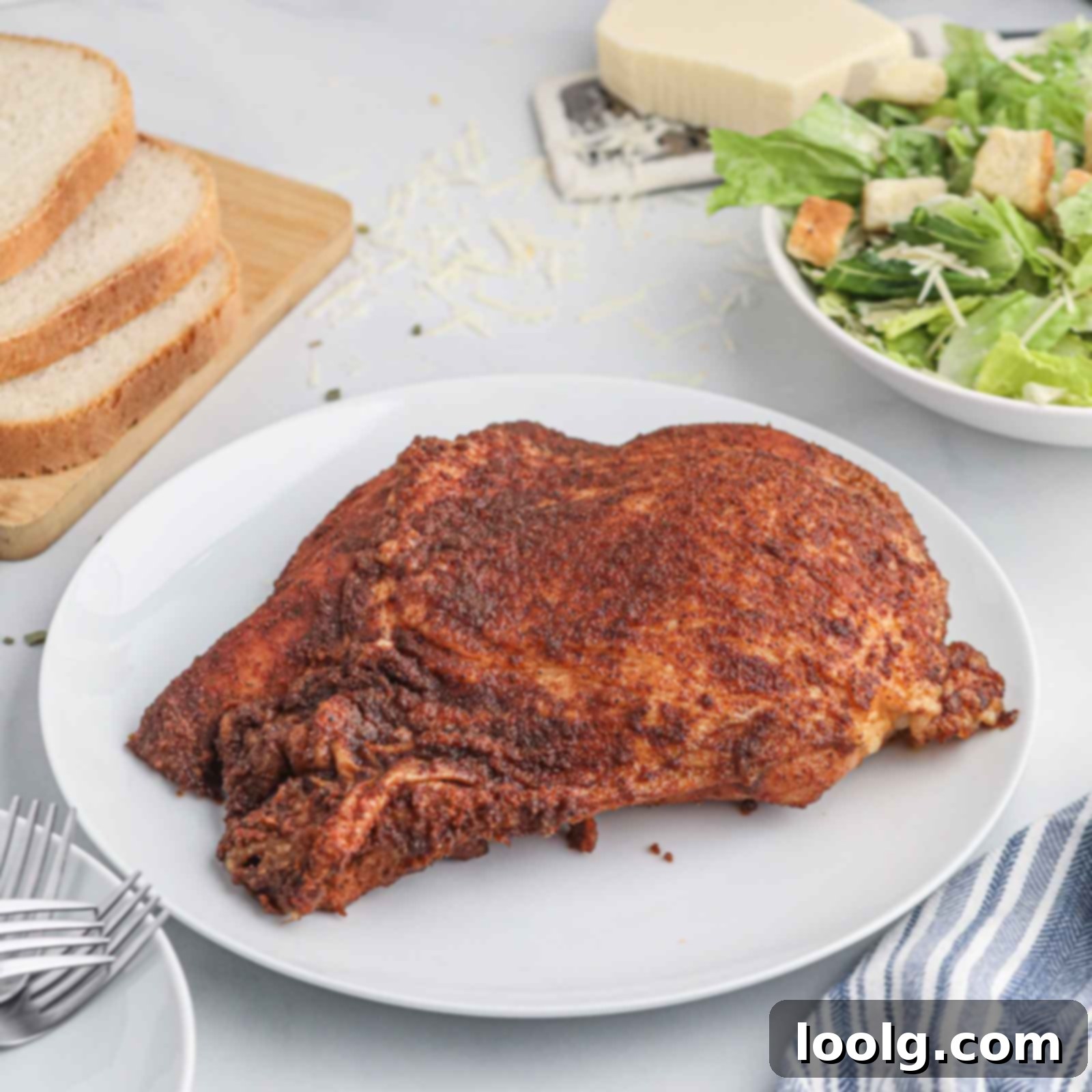Perfectly Juicy Smoked Turkey Breast: A Beginner’s Guide to Flavorful Holiday Meals
Embark on a culinary journey to create the most succulent, flavorful smoked turkey breast you’ve ever tasted! This recipe is specifically designed to be simple and incredibly delicious, making it perfect for first-time smokers or anyone looking for a foolproof method to achieve a tender, juicy turkey. With its rich, smoky aroma and moist, savory meat, this smoked turkey breast is guaranteed to impress, whether it’s the centerpiece of your Thanksgiving feast or a delightful addition to a weekend dinner.
The secret to this turkey’s exceptional juiciness lies in a simple yet effective brine, combined with a slow and steady smoking process. You don’t need fancy gadgets or complex techniques; just a reliable smoker (like a Traeger, though any brand will do) and a willingness to follow our easy steps. By the end, you’ll be carving a perfectly cooked turkey breast that boasts incredible flavor with minimal hands-on effort. Plus, it’s naturally gluten-free, dairy-free, and paleo-friendly (with a simple sugar swap!), ensuring everyone can enjoy this delectable dish.
Imagine a holiday meal where the main course practically cooks itself, leaving you more time to focus on delicious side dishes or, more importantly, to spend quality moments with loved ones. Smoking a turkey breast offers a wonderful, less labor-intensive alternative to traditional roasting, freeing up valuable oven space and reducing stress. While it’s an absolute showstopper for Thanksgiving, this versatile recipe is equally fantastic for casual Sunday dinners, summer cookouts, or any occasion that calls for a truly outstanding turkey.
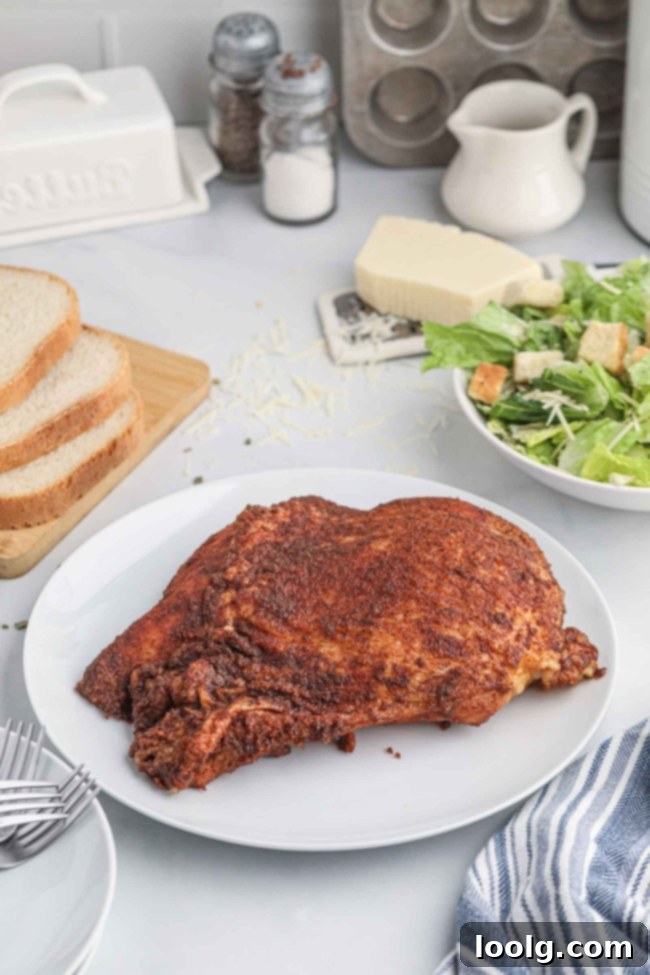
Many people shy away from smoking, believing it to be a complicated cooking method. However, this recipe will quickly dispel that myth. Once you discover how straightforward it is to smoke a turkey breast, you’ll wonder why you ever did it any other way. The result is consistently juicier and more flavorful than any roasted turkey, a sentiment even shared by our photographer, who typically doesn’t enjoy turkey. She raved, “I don’t care for the taste of turkey, and I usually find it to be really dry; this was none of those, and I’ll definitely be making it again.” That’s high praise!
For those times when smoking isn’t an option, other convenient methods can still deliver a lean and tasty turkey dinner, such as an Air Fryer Turkey Breast or an Instant Pot Turkey Breast. But for that incomparable smoky depth and moist texture, this smoked turkey breast recipe reigns supreme.
Essential Ingredients for a Perfect Smoked Turkey Breast
Gathering the right ingredients is the first step to a sensational smoked turkey breast. Our recipe is divided into two main parts: the brine, which is crucial for moisture and flavor, and the rub, which adds a beautiful crust and aromatic spices.
For the Flavor-Infusing Brine
- Water: This is the foundation of our brine, dissolving the salts and sugars to create a powerful flavor solution that penetrates the turkey.
- Ice Water: Essential for rapidly cooling the heated brine mixture. Adding ice water immediately brings the temperature down, ensuring you can safely submerge the turkey without cooking it prematurely.
- Coarse Sea Salt: A key player in the brining process. Salt not only seasons the turkey deeply but also helps the meat retain moisture through osmosis, resulting in a noticeably juicier final product.
- Brown Sugar: Adds a delightful touch of sweetness that perfectly balances the saltiness of the brine. It also contributes to the beautiful caramelization of the turkey skin and adds a nuanced depth of flavor. For a paleo-compliant option, simply substitute with coconut sugar.
- Kosher Salt: Another excellent choice for brining, kosher salt’s larger crystal size dissolves well and contributes to both seasoning and forming a desirable crust.
For the Aromatic Dry Rub
The beauty of a dry rub is its versatility! Feel free to customize it to your personal taste. If you’re not a fan of a particular spice, like cayenne pepper, simply omit it or adjust the quantity. When using a store-bought rub, always double-check the label to ensure it’s gluten-free, dairy-free, or paleo-compliant, if those are your dietary considerations.
- Black Pepper: Provides a classic, slightly pungent kick and enhances the overall spice profile.
- Sweet Paprika: Contributes a beautiful reddish hue to the turkey skin and a mild, slightly sweet, and smoky flavor.
- Garlic Powder: Infuses the turkey with a rich, savory, and aromatic flavor that is a staple in most delicious rubs.
- Cayenne Pepper: For those who appreciate a hint of heat. Adjust the amount to match your preferred spice level – a little goes a long way!
- Boneless Turkey Breast: We’ll discuss the best type and size of turkey breast to select in detail below to ensure optimal results.
- Olive Oil: Acts as a binder for the rub, helping the spices adhere evenly to the turkey. It also plays a vital role in keeping the skin moist during smoking and promoting a wonderfully crispy texture when finished at a higher temperature. Any neutral oil like canola or vegetable oil can be used, but olive oil adds a lovely complementary flavor.
Understanding Salt Conversion for Brining Success
Accurate salt measurement is paramount in brining, as different types of salt vary significantly in texture and density. This is a common oversight in many recipes that simply state “salt,” which can lead to over or under-salting. To ensure perfect results, measuring by weight is always the most precise method.
For our brine, aiming for 125 grams of salt provides the ideal balance. If you’re measuring by volume, here are some helpful conversions:
- 1/2 cup Morton Coarse Kosher Salt
- 14 tablespoons Diamond Crystal Kosher Salt
- 6 tablespoons table salt
For the dry rub, we’ve kept it simple with 2 tablespoons (42 grams) of table salt. Again, you can use any salt you prefer, keeping the above conversions in mind, or simply weigh out 42 grams for consistent seasoning.
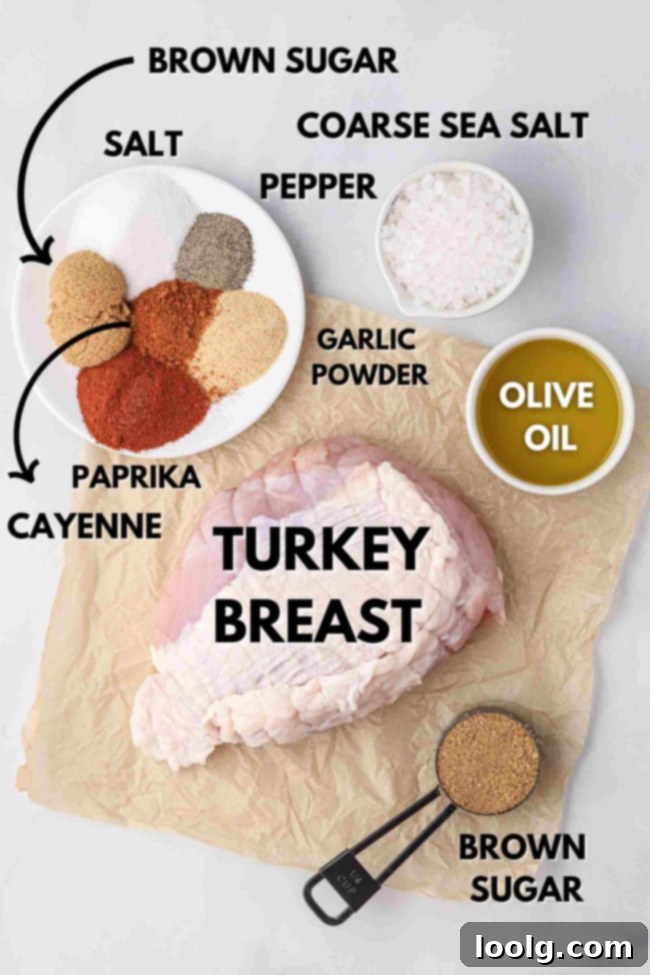
Choosing Your Turkey Breast: Boneless vs. Bone-In
For this recipe, we highly recommend a fresh, boneless turkey breast, ideally weighing between 4 to 6 pounds (1.8-2.7 kg), that has not been pre-seasoned or injected with a solution. Pre-seasoned turkeys often contain a significant amount of sodium, which would interfere with our brining process and could result in an overly salty bird. If your turkey breast is frozen, remember to thaw it completely in the refrigerator overnight before you begin any preparation.
While boneless is preferred for consistent cooking and easier carving, a bone-in turkey breast can also be used. If opting for bone-in, position it bone-side down on the grill grates to allow for even heat distribution. Keep in mind that bone-in breasts generally require a longer cooking time—typically an additional 30-45 minutes compared to a boneless breast of the same weight—because the bone helps retain heat and moisture, which slows down the cooking process. Regardless of your choice, a reliable meat thermometer is your best friend for ensuring food safety and perfectly cooked poultry. The safe internal temperature for turkey is 165 °F (74 °C). You’ll remove the turkey from the smoker at 160 °F (71 °C), as it will continue to cook and reach the target temperature during the resting period.
Selecting the Right Turkey Breast Size
Boneless turkey breasts typically range from 2 to 8 pounds (907 grams to 3.6 kg), with sizes between 3 to 6 pounds (1.4 to 2.7 kg) being the most common and ideal for this recipe. Smaller breasts (around 2-3 pounds) are perfect for more intimate gatherings or weeknight meals, while larger ones (5-8 pounds) can easily feed a bigger crowd.
Determining How Much Turkey to Buy
When planning your meal, a good guideline is to purchase approximately 1/2 to 3/4 pound (226 to 340 grams) of turkey breast per person. This allows for some weight loss during cooking and provides a generous serving, with the added benefit of potential leftovers.
- For lighter eaters or meals with many rich side dishes, 1/2 pound (226 grams) per person should suffice.
- For heartier appetites or fewer accompanying dishes, aim for 3/4 pound (340 grams) per person.
For example, to serve 10 guests:
- At 1/2 pound per person, you’ll need 5 pounds (2.3 kg) of turkey breast.
- At 3/4 pound per person, you’ll need 7.5 pounds (3.4 kg) of turkey breast.
It’s always a good idea to err on the side of caution and round up slightly – leftover smoked turkey is fantastic for sandwiches and salads!
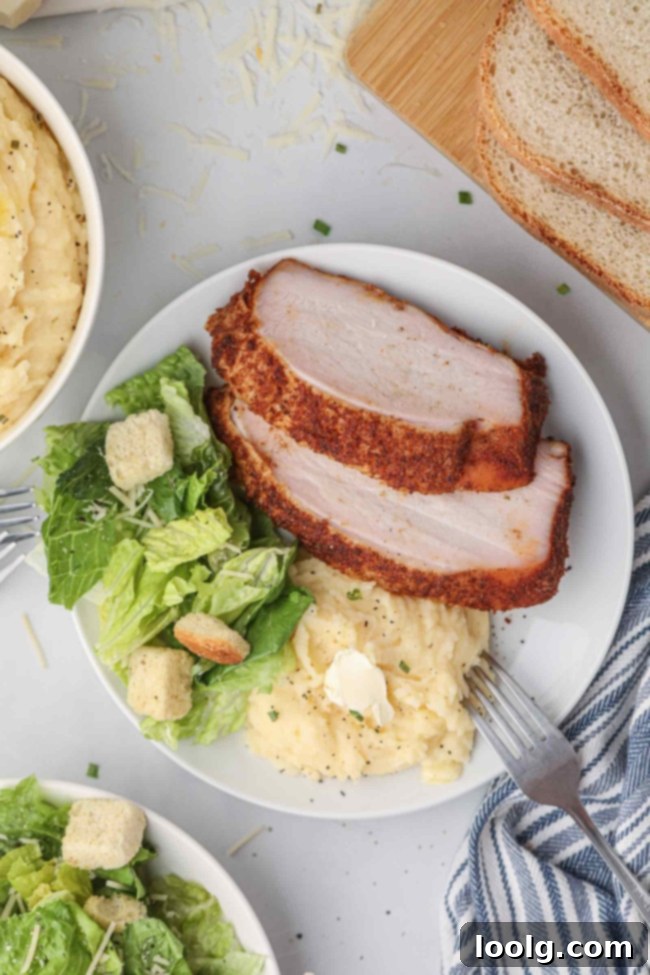
The Brine: A Non-Negotiable Step for Optimal Results
While technically optional, brining your turkey breast is *highly recommended* and truly makes all the difference, especially when smoking. Brining transforms the meat by enhancing its flavor, improving its texture, and most importantly, guaranteeing exceptional moisture retention. If you’ve ever suffered through a dry turkey, brining is your salvation!
Here’s why you shouldn’t skip this crucial step:
- Unmatched Moisture Retention: The salt in the brine initiates a process called osmosis, allowing the turkey to absorb and hold onto moisture. This ensures the meat remains incredibly juicy throughout the long smoking process, preventing it from drying out, even if slightly overcooked.
- Deep Flavor Infusion: Brining isn’t just about moisture; it’s also about flavor. The brine, infused with salt, sugar, and optional aromatics, penetrates deep into the turkey fibers. This results in a consistently flavorful turkey breast, seasoned from the inside out, rather than just on the surface.
- Tender Texture: The salt in the brine also helps to denature some of the meat proteins, effectively breaking them down. This process yields a noticeably more tender turkey breast, making each bite more enjoyable.
- Superior Smoke Enhancement: A properly brined turkey breast tends to absorb smoke flavors more evenly. It also aids in developing that highly sought-after, beautifully seasoned, and slightly crispy crust that makes smoked turkey so irresistible.
Choosing the Best Wood for Smoked Turkey Breast
The type of wood you use for smoking significantly influences the final flavor of your turkey. For delicate poultry like turkey breast, a milder, sweeter wood is generally preferred to complement, rather than overpower, its natural flavor. For this recipe, and similar to our Smoked Spatchcock Chicken, we highly recommend woods that impart a subtle sweetness and fruity aroma.
Our top recommendations include:
- Apple Wood: Offers a mild, sweet, and fruity smoke that is a classic pairing for poultry.
- Cherry Wood: Provides a slightly richer fruitiness and a beautiful reddish-brown color to the turkey skin.
- Pecan Wood: Delivers a nutty, delicate flavor that is mild and doesn’t overwhelm the turkey.
- Maple Wood: Imparts a gentle, sweet, and slightly woody flavor.
While stronger woods like hickory and mesquite are excellent for red meats, their intense, bold smoke can easily overshadow the delicate flavor of turkey. For instance, a Smoked Ribeye Recipe thrives with these robust options, but for turkey, err on the side of subtlety to let the natural flavors shine through.
Step-by-Step Guide: How to Smoke Turkey Breast
Smoking a turkey breast is a surprisingly straightforward process that yields incredibly rewarding results. While there’s a little bit of prep involved, once the turkey is in the smoker, it’s mostly a hands-off affair, allowing you to relax and anticipate a delicious meal. Below is an overview of the key steps. For precise measurements and detailed instructions, please refer to the recipe card at the bottom of this page.
1. Brine the Turkey: Begin by brining your turkey breast. This involves submerging it in a saltwater solution with added sugar and other optional aromatics. This step is critical for ensuring the turkey stays juicy and is seasoned thoroughly, eliminating any risk of dry, bland meat. Allow it to brine for 8 to 24 hours in the refrigerator.
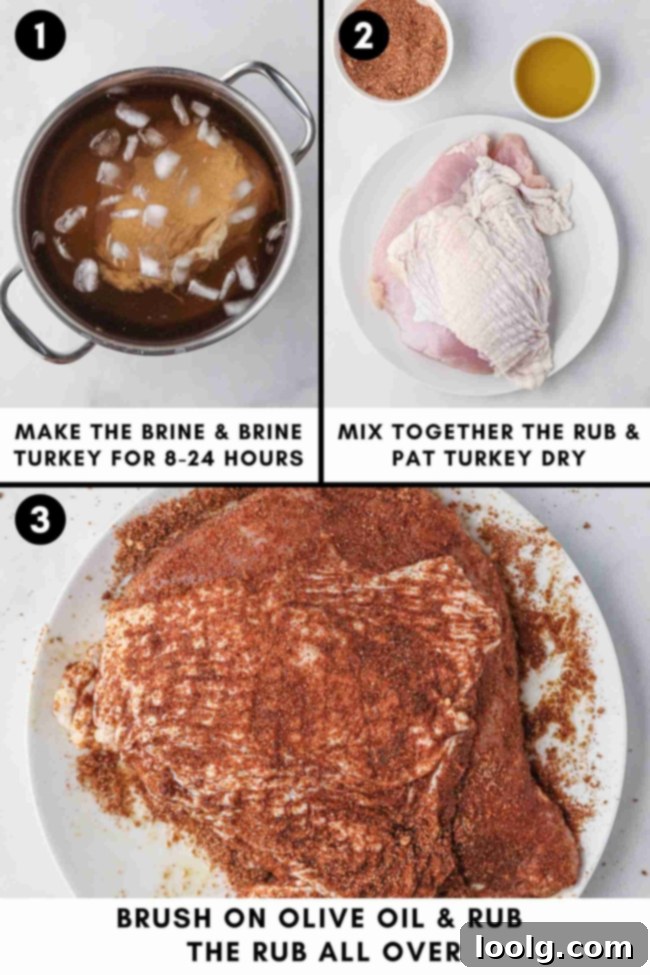
2. Prepare the Turkey: After brining, remove the turkey breast and pat it thoroughly dry with paper towels. A dry surface is essential for two reasons: it allows the spice rub to adhere effectively, and it facilitates the development of a crispy, golden-brown skin during smoking. Moisture on the surface would create steam, hindering crispiness.
3. Apply the Dry Rub: In a small bowl, combine all the ingredients for your chosen dry rub. Once mixed, lightly coat the turkey breast with olive oil. This helps the rub stick and aids in crisping the skin. Generously apply the rub over the entire turkey, making sure to lift the skin gently and apply some rub directly to the meat underneath for an extra burst of flavor.
4. Set Up Your Smoker: Preheat your smoker to a consistent temperature of 225 °F (107 °C). Allow it to come to temperature and stabilize for about 15 minutes with the lid closed. Use your preferred mild wood chips or pellets, such as apple, cherry, pecan, or maple.
5. Smoke Low and Slow: Place the seasoned turkey breast directly on the grill grates, skin-side up. This orientation allows the fat from the skin to slowly render and baste the meat below, keeping it moist and flavorful, while also promoting crispier skin. Insert a reliable meat thermometer into the thickest part of the breast, ensuring it doesn’t touch any bone if present.
Smoke the turkey at 225 °F (107 °C) for approximately 2.5 to 4.5 hours. A good rule of thumb is about 30-40 minutes per pound. The turkey is ready when its internal temperature reaches 160 °F (71 °C). If the turkey appears to be drying out during the smoking process, you can baste it lightly with olive oil every hour.
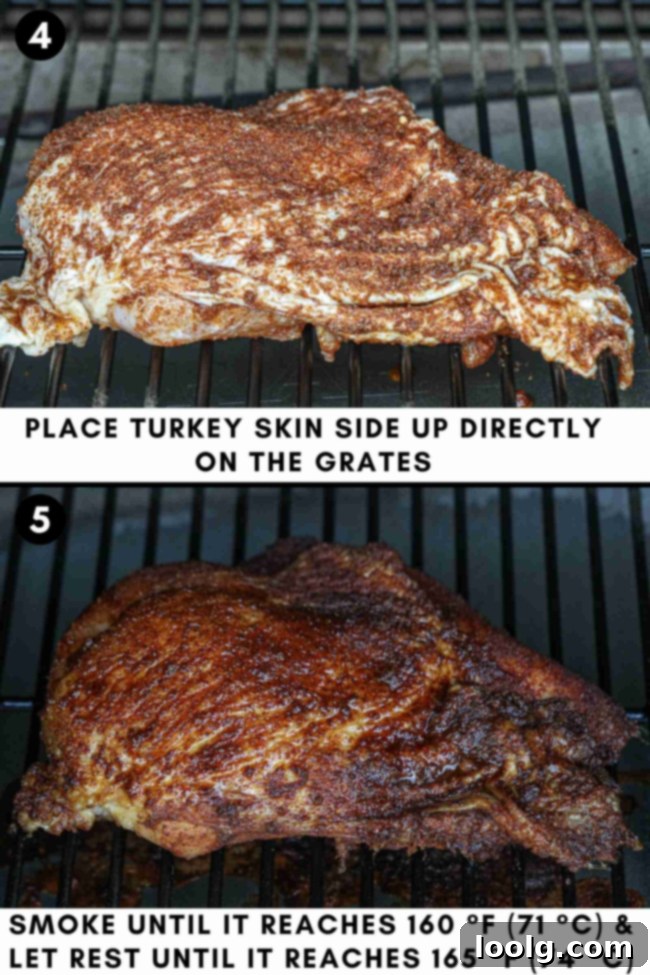
Achieving Crispier Turkey Skin (Optional High-Temperature Finish)
Smoking at a low temperature is fantastic for tenderness and smoke flavor, but it typically won’t yield super crispy skin. If you desire a crispier skin, you can incorporate a high-temperature finish:
- Prepare for the Finish: Once the turkey breast reaches an internal temperature of about 140-150°F (60-65°C) during the smoking process, lightly coat the skin with a bit more olive oil or butter (if dairy is not a concern).
- Increase Heat: If your smoker can safely handle higher temperatures without producing excessive, acrid smoke, increase its temperature to 375-400°F (190-200°C). Alternatively, transfer the turkey to a preheated oven or traditional grill for this step.
- Monitor Closely: Continue cooking at the higher temperature for approximately 20-30 minutes, or until the internal temperature reaches 160°F (71°C) and the skin has browned and crisped to your liking. Keep a close eye on it to prevent overcooking the meat.
While this method will certainly improve the skin’s crispiness, manage your expectations: it won’t become as intensely crispy as deep-fried chicken skin. The goal is a pleasant, slightly rendered, and golden-brown skin.
Why Skip the Foil Pan? Maximizing Flavor and Texture
You might notice that this recipe calls for placing the turkey breast directly on the grill grates, rather than in a foil pan. This decision is intentional and crucial for achieving the best possible smoked turkey. Here’s why:
- Superior Smoke Circulation: Direct placement on the grates allows smoke to envelop the entire surface of the turkey. This maximizes smoke exposure, enhancing that desired smoky flavor and contributing to a beautiful smoky “bark” or crust on the skin.
- Crispier Skin Development: Direct grilling promotes more even heat circulation around the turkey. This is particularly important for developing crispy skin, especially when incorporating the high-temperature finish step at the end of the cooking process.
- Consistent Cooking: Without a barrier, heat is distributed more uniformly around the turkey, leading to more consistent cooking from all angles.
If you use a foil pan: The bottom of the turkey would sit in its own drippings, inevitably leading to soggy skin and significantly reducing smoke penetration to that area. While foil pans are excellent for catching drippings for gravy or retaining moisture in other applications, for optimal smoked turkey breast, direct heat is preferred. If gravy is a priority, consider placing the turkey on a wire rack *inside* a foil pan. This allows for some smoke circulation while still collecting those precious juices.
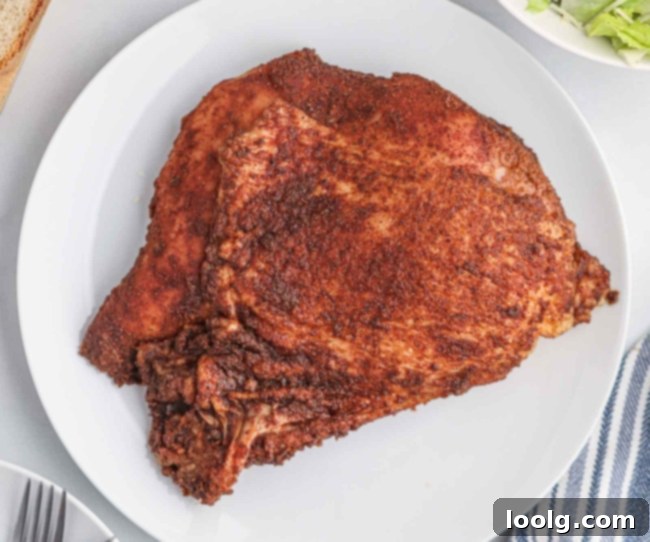
To Tent or Not to Tent: Preserving Crispy Skin
After your beautifully smoked turkey breast comes off the smoker, it’s customary to let it rest. Some recipes suggest tenting it loosely with foil. However, for this recipe, we advise against it if crispy skin is your goal. Tenting, while keeping the turkey hot, can trap steam, which will inevitably soften the delicious crispy skin you worked hard to achieve. The turkey will retain enough heat during its 15-20 minute rest without being tented, ensuring the meat remains juicy and the skin stays crisp.
Pro Tips for Smoked Turkey Breast Success
- Always Use a Meat Thermometer: This is non-negotiable for any smoked meat recipe. Color and cooking time alone are unreliable indicators of doneness. An accurate thermometer ensures food safety and prevents overcooking.
- Baste if Needed: If you notice the turkey breast starting to look dry at any point during the smoking process, don’t hesitate to baste it lightly with a little olive oil. This will help maintain moisture and promote a beautiful crust.
- Allow Ample Resting Time: Once the turkey reaches its target internal temperature, remove it from the smoker and let it rest, uncovered, for 15-20 minutes before carving. This crucial step allows the juices to redistribute evenly throughout the meat, ensuring every slice is incredibly moist and tender. Skipping the rest will result in dry turkey as the juices will simply run out when you carve it.
- Avoid Frequent Lid Opening: Every time you open your smoker, heat escapes, and the cooking temperature drops. This prolongs cooking time and can lead to uneven results. “If you’re looking, it’s not cooking!” Resist the urge to peek often.
- Quality Turkey Matters: Start with a fresh, good-quality turkey breast that hasn’t been pre-brined or injected with solutions. This gives you full control over the flavor and moisture.
Suggested Timeline for Your Holiday Meal
Smoking a turkey breast typically takes about 30 to 40 minutes per pound when maintaining a temperature of 225 °F (107 °C). However, cooking times are always approximate and can fluctuate based on your specific smoker, external weather conditions, and the exact size and shape of your turkey breast. This suggested timeline is for a 6-pound turkey breast, aiming to serve it for a 12 p.m. Thanksgiving meal.
Day Before Serving:
- 6 a.m. – 10 p.m.: Begin brining the turkey breast. For a full 24-hour brine, start at 6 a.m. For a shorter 8-hour brine, start around 10 p.m. Adjust as needed for your desired brine duration (minimum 8 hours, maximum 24 hours).
Day of Serving:
- 6 a.m. – 7 a.m.: Remove the turkey from the brine. Pat it thoroughly dry and let it rest at room temperature for 30 minutes to 1 hour to take the chill off. This helps with more even cooking.
- 7 a.m. – 7:15 a.m.: Prepare your dry rub ingredients and preheat your smoker to 225 °F (107 °C). Allow it to heat up and stabilize for about 15 minutes with the lid closed.
- 7:15 a.m. – 7:30 a.m.: Lightly coat the turkey with olive oil and generously apply the rub, ensuring it’s evenly distributed, including under the skin.
- 7:30 a.m.: Place the turkey breast on the smoker, skin side up, directly on the grill grates. Insert your meat thermometer into the thickest part of the breast.
- 7:30 a.m. – 11:00 a.m.: Smoke the turkey breast. Expect it to take roughly 2.5 to 4.5 hours, depending on its size. Your goal is for the internal temperature to reach 160 °F (71 °C) by 11:00 a.m. If you plan to crisp up the skin, remember to follow the optional high-temperature finish step during this window. Baste with olive oil if it appears dry.
- 11:00 a.m. onwards: Begin checking the internal temperature more frequently. Once it’s close to 160 °F (71 °C), check every 15 minutes to avoid overcooking. If not quite there, let it smoke a little longer.
- 11:30 a.m. – 12:00 p.m.: Once the turkey reaches 160 °F (71 °C) internal temperature, remove it from the smoker. Let it rest, uncovered, for 15 to 20 minutes. During this time, carry-over cooking will bring the temperature up to the safe 165 °F (74 °C).
- 12:00 p.m.: Carve your perfectly smoked turkey breast and serve immediately!
Delicious Pairings: What to Serve with Smoked Turkey Breast
A beautifully smoked turkey breast deserves equally delicious accompaniments. On my other blog, you’ll find a wealth of Thanksgiving recipes that would perfectly complement this dish, ranging from vibrant vegetable sides to indulgent desserts and festive drinks. Think about balancing the rich, smoky flavor of the turkey with fresh, starchy, or slightly sweet side dishes.
Here are some fantastic ideas that pair wonderfully with smoked turkey:
- Dairy-free Cornbread
- Creamy Red-skinned Mashed Potatoes
- Soft Whole Wheat Dinner Rolls
- Sweet Potato Goat Cheese Salad
- Comforting Sweet Potato Mac and Cheese
- Warm Pear Cider
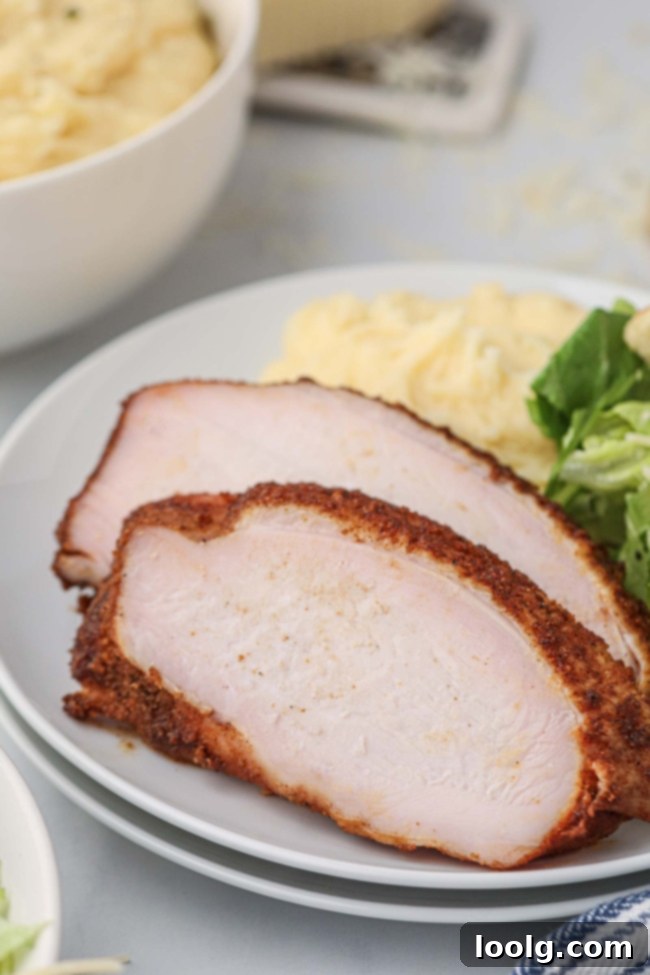
And call me unconventional, but I absolutely adore serving Buttermilk Biscuits with this smoked turkey! While often considered a breakfast staple, their flaky texture and rich flavor make them an outstanding accompaniment to a savory dinner.
Making Ahead & Storing Leftovers
Can You Make Smoked Turkey Breast Ahead of Time?
While this smoked turkey breast is undoubtedly at its best when served fresh on the day it’s cooked, we understand that sometimes planning ahead is necessary for busy holidays or events. If you need to prepare it a day or two in advance, here’s how to do it while preserving as much quality as possible:
Follow the recipe completely. Once the turkey has finished cooking and has had its essential resting period, allow it to cool completely. Then, wrap it tightly in aluminum foil to prevent air exposure and store it in an airtight container in the refrigerator. When you’re ready to serve, brush the turkey slices with a little olive oil or turkey broth to reintroduce moisture, then reheat gently at 300 °F (150 °C) for about 20-30 minutes, or until warmed through. Reheating time will vary depending on the thickness of your slices and the size of the breast.
Storing Leftovers
Smoked turkey breast makes fantastic leftovers! To store, wrap the cooled turkey tightly in plastic wrap or aluminum foil, and then place it in an airtight container. It will keep beautifully in the refrigerator for 3-4 days. Since the turkey is fully cooked during the smoking process, it’s perfectly safe and delicious to enjoy cold directly from the fridge. Cold smoked turkey is a versatile ingredient, excellent for sandwiches, salads, wraps, or even simply as a protein-rich snack with cheese and crackers.
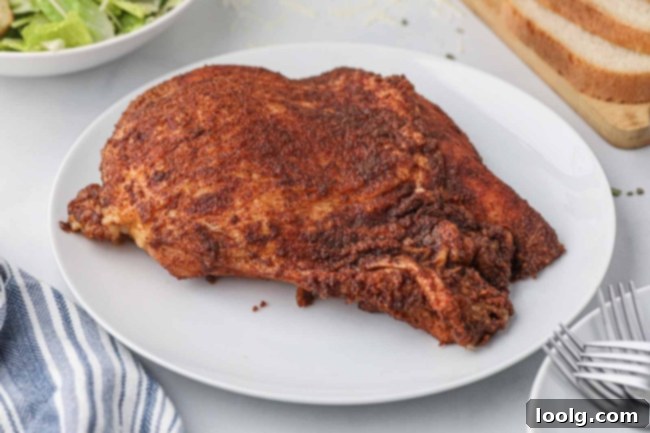
Freezing Smoked Turkey Breast for Longer Preservation
For longer storage, freezing is an excellent option. Wrap individual portions or the entire cooled turkey breast tightly in plastic wrap, then an additional layer of aluminum foil. Place the wrapped turkey into a freezer-safe bag or container, removing as much air as possible. It will maintain its quality in the freezer for 2-3 months.
To reheat from frozen, transfer the turkey to the refrigerator to thaw overnight. Once thawed, lightly brush the smoked turkey breast with olive oil or broth to help prevent dryness, then warm it in an oven preheated to 300 °F (150 °C) until heated through. The exact reheating time will depend on the size and thickness of the turkey slices.
Common Questions About Smoking Turkey Breast
How long should turkey breast rest before carving?
Resting the turkey after cooking is one of the most critical steps to ensure a moist and tender result. This allows the muscle fibers to relax and the internal juices, which have migrated to the center during cooking, to redistribute throughout the entire meat. If you carve immediately, these flavorful juices will simply run out onto your cutting board, leaving you with a drier turkey. A resting period of 20-30 minutes is generally recommended for a turkey breast to achieve optimal juiciness.
Can you smoke a frozen turkey breast?
No, it is crucial to fully thaw a frozen turkey breast in the refrigerator overnight before attempting to smoke it. Smoking a frozen turkey poses significant food safety risks and will result in an unevenly cooked product. The outer layers would cook and dry out, while the internal parts remain frozen, creating a dangerous temperature zone where bacteria can thrive. Always ensure your turkey breast is completely thawed before brining and smoking.
Dietary Information: Gluten-Free, Dairy-Free, and Paleo
This smoked turkey breast recipe is wonderfully accommodating for various dietary needs, as it is naturally gluten-free and dairy-free! For those following a paleo diet, a simple substitution of coconut sugar for brown sugar in both the brine and the rub will make the entire recipe paleo-compliant.
When using store-bought spice rubs or blends, always exercise caution and double-check the ingredient labels. While most individual spices are naturally gluten-free and dairy-free, some commercial blends can include anti-caking agents, fillers, or other ingredients that contain gluten or dairy. Cross-contamination during processing in manufacturing facilities can also be a concern for highly sensitive individuals. To be absolutely sure, look for spice blends explicitly labeled as gluten-free and dairy-free.
We truly hope you enjoy making and savoring this incredible smoked turkey breast! If you give this recipe a try, we’d love to hear your thoughts and experiences in the comments below. Happy smoking! 🙂
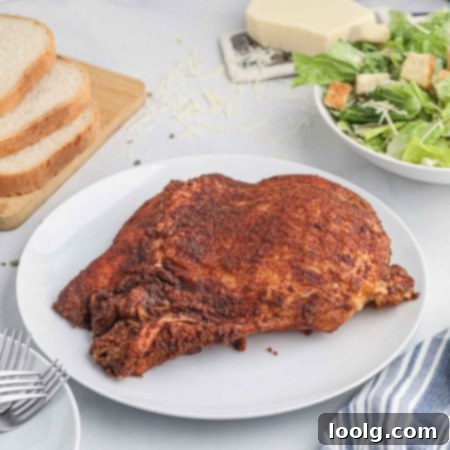
Smoked Turkey Breast
Ingredients
Brine:
- 2 quarts (1.9 liters) water
- 2 quarts (1.9 liters) ice water combined volume of ice and water should be 2 quarts
- 1/2 cup (125 grams) kosher salt 1/2 cup Morton Coarse Kosher Salt, or 14 tbsp Diamond Crystal Kosher Salt, or 6 tbsp table salt
- 1/4 cup (50 grams) brown sugar or coconut sugar
Rub:
- 2 tablespoons (25 grams) brown sugar or coconut sugar
- 2 tablespoons (42 grams) table salt
- 1/2 tablespoon black pepper
- 1 tablespoon sweet paprika
- 1 tablespoon garlic powder
- 1 teaspoon cayenne pepper
Turkey:
- 1 boneless turkey breast see notes
- 1/4 cup (60 ml) olive oil
Instructions
Brine the night before:
-
In a large pot, combine 2 quarts of water, salt, and sugar. Stir over medium heat until the salt and sugar dissolve completely.
-
Remove from heat, add the ice water and stir.
-
Submerge the turkey breast in the brine, making sure it’s fully covered. Use a plate, a stack of plates or another heavy object to weigh it down if necessary.
-
Refrigerate for 8 to 24 hours.
30-60 minutes before smoking:
-
Remove the turkey breast from the brine, and pat dry. Transfer the turkey to a large plate (or whatever you want) and let sit for 30 minutes to 1 hour.
-
In a small bowl, mix together all rub ingredients.
Smoke:
-
Preheat your smoker to 225 °F (107 °C) with the lid closed for about 15 minutes. Apple, cherry, pecan and maple are good wood choices.
-
Coat the turkey breast lightly with olive oil to help the rub stick, including between the skin and the meat. Generously apply the rub to the entire turkey breast, making sure to coat it evenly and get the area between the skin and meat.
-
Place the turkey breast on the smoker, skin side up, directly on the grill grates. Place the probe/themometer into the thickest part of the breast.
-
Smoke at 225 °F (107 °C) for about 2.5 to 4.5 hours (it needs about 35-45 minutes per pound), or until the internal temperature reaches 160 °F (71 °C) in the thickest part of the breast. If it’s starting to look dry, you can baste the turkey breast every hour with olive oil. If you want to crisp up the skin,
-
Once the turkey reaches the desired temperature, remove it from the smoker and let it rest for 15 to 20 minutes. During resting, the internal temperature should rise to 165 °F (74 °C). After the resting period, carve the turkey breast and serve.
-
To store leftovers, wrap the turkey in plastic or foil, then place it in an airtight container. It’ll keep in the fridge for about 3-4 days.
Notes
- The turkey breast in the photo was 4 pounds (1.8 kg), but this recipe and the estimated times given are good for up to a turkey breast of about 6 pounds (2.7 kg). If yours is larger or smaller, just keep in mind you’ll need more or less time than the approximate times given.
- Do NOT use a turkey breast that’s already been salted/brined/injected/basted/enhanced. If that’s all you can find, then skip the brine in this recipe.
- It should be thawed if frozen.
- If you can only get a bone-in turkey breast, then place it bone-side down on the grill with the breast facing up.
